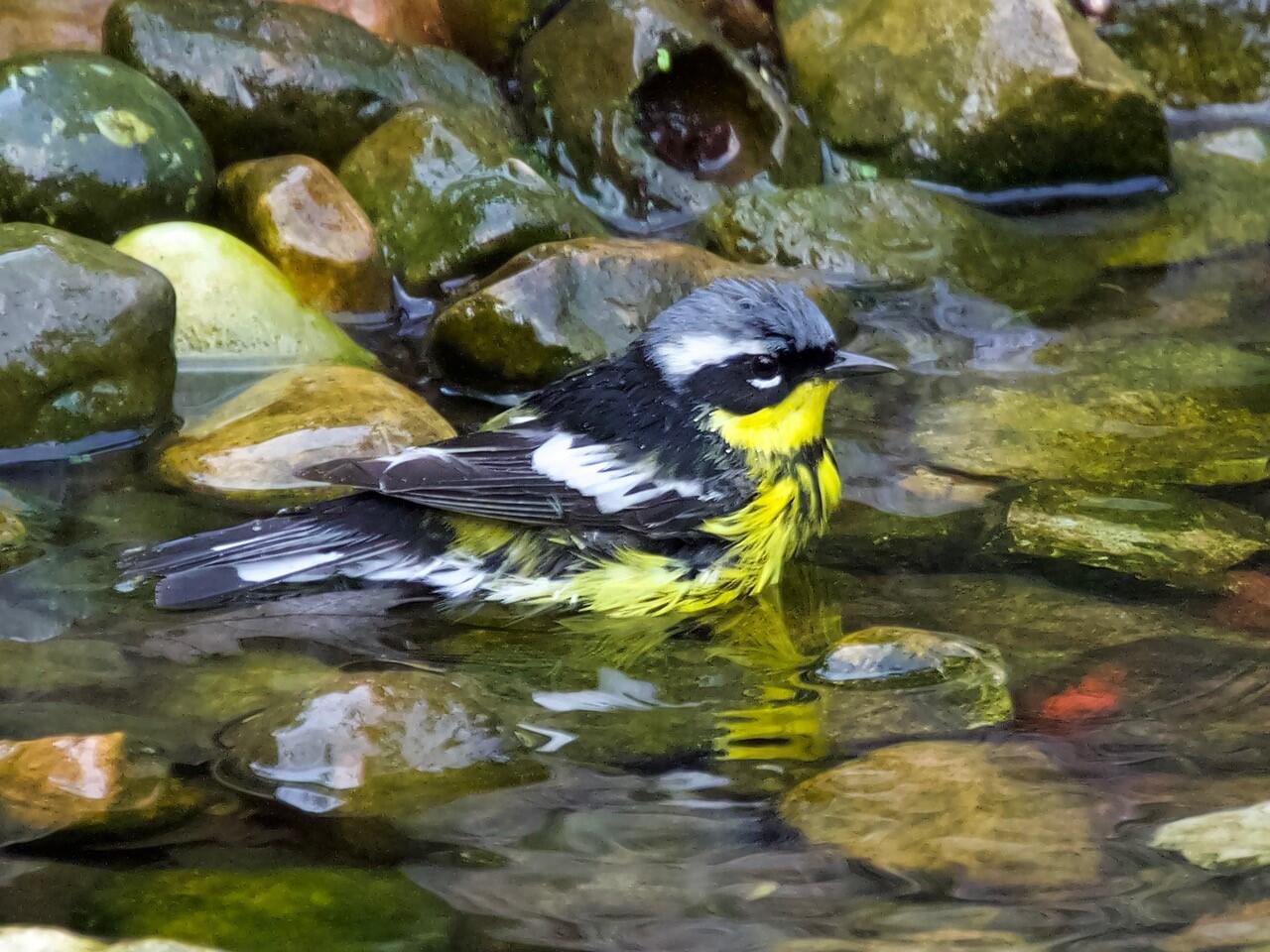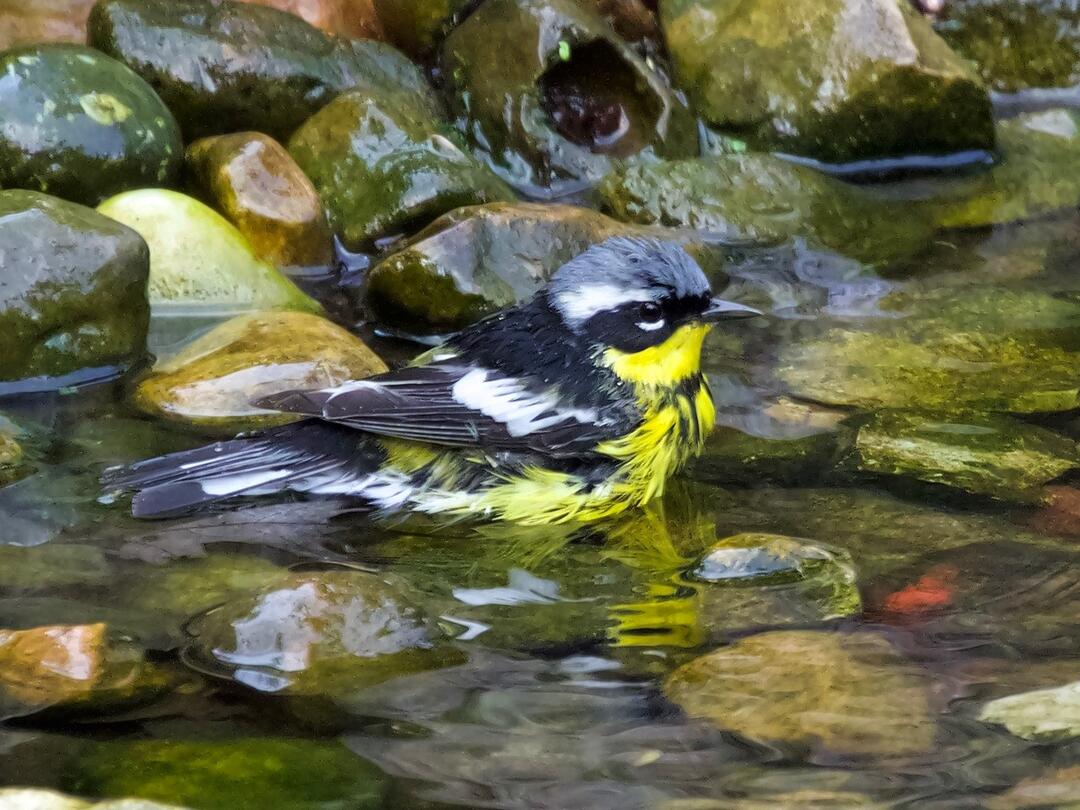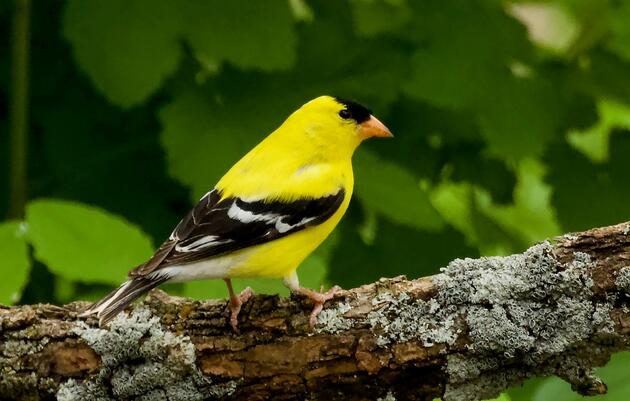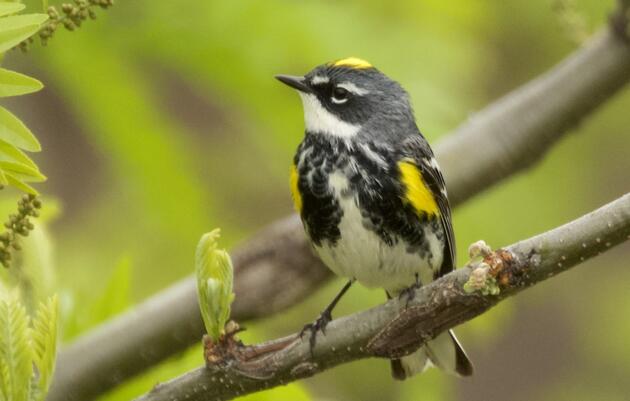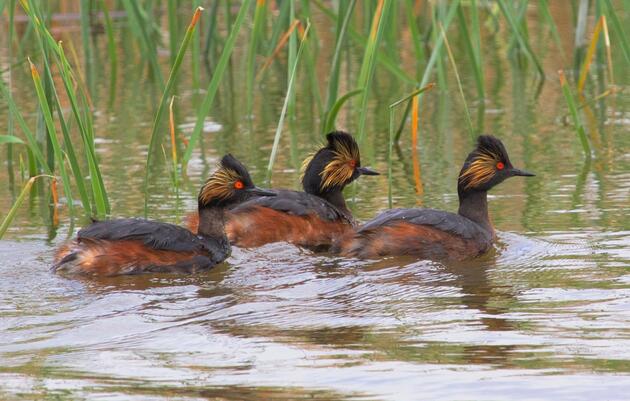By Tom Taylor, Resident Birder, Santa Fe, NM
For almost two months this column has taken you on a cyber-tour around the country during the spring songbird migration. This is the eighth column during the COVID-19 pandemic confinement. The reader can link to other articles in the series using the references at the bottom of this page. The tour began in the southwestern part of the US, where the author resides in Santa Fe, NM. For more than ten years each spring he has taken at least one photographic outing to another part of the country to follow the arrival of the neo-tropical migrants from Central and South America.
The previous column took the cyber-tour north in eastern Iowa, reaching the Cedar Rapids locale where the author was raised and has some special birding contacts. To be personal, while visiting relatives there some ten years ago, I met some Audubon members and developed a close association with one couple. They were exceptional birders who took the time to introduce me to the wide variety of eastern-range birds that I had not experienced while living in the southwest. There was a lot of room for improvement. Beyond learning all the ins and outs of birding around eastern Iowa from them, I was invited to their home – and a backyard that is an incredible songbird migration stop, whether it be spring or fall. The backyard, shown in the photo, has an ample supply of ground cover and bushes, plus a manmade slow moving stream and feeders. Many songbirds, especially warblers, are foliage gleaners and the shrubbery offers a bounty of insects. Birds drawn into the stream or water’s edge can be ideally photographed in the open. The lead photo of the Magnolia Warbler is a typical observation of how the birds visit a shallow pool to take a bath. The backyard has produced 33 species of warblers over the years. The start of a “rigorous” birding day there consists of coffee and pastry while sitting on the nearby porch – and with camera ready at hand.
This article has a very different structure than most of the preceding ones in that there is no travel section – the focus being a kaleidoscope of songbird photos taken at one location. I am going to gather some facts and history on the birds in this article and present them in a somewhat hit-and-miss fashion. After many years of birding I have a number of birding references and articles and have supplemented that with information that is readily found on-line at the Audubon and Cornell web sites. Excepting the Black-and-white Warbler and Common Yellowthroat, the other six warblers nest entirely north of Iowa - many in the boreal forest of Canada. Indeed they are just a small sampling of the many species of spring migrants that fly north and follow the sun as it progresses to the summer solstice – birds numbering in the many millions in what for most of the population is an “invisible flow of life.”
Although not the most colorful, the Tennessee Warbler is impossible to miss during its spring migration as it projects a very loud staccato song from high in the trees. On my return to Iowa as a novice birder, I was subconsciously familiar with this bird as it was once a loud and unappreciated vocal addition to my teenage golf game in the spring. (The reader can click on the speaker link found inside the bird icon to the left of this article to hear the song). In fact, this warbler only migrates through Tennessee. Alexander Wilson, a Scot who was dubbed the “Father of American Ornithology”, first documented it in 1811 along the Cumberland River in Tennessee. Wilson was also responsible for naming the Magnolia Warbler, having first seen one in this tree in Mississippi in 1810.
Appearances can be unavoidable, as is the case for the Blackburnian Warbler, the only North American wood warbler with an orange plumage. It can be quite hard to locate high in the trees with a very high-pitched (inaudible for some) call. The trick is to encourage them to make a rest stop, as in the photo. The bird was likely named after Anna Blackburne, a naturalist in the late 1700s.
Black-and-white Warblers are among the earliest to migrate in the spring and, although they have only starkly contrasting colors, are easily identified by their feeding behavior. In a manner somewhat like a nuthatch, they poke along tree trunks and branches probing the bark for insects. The Canada Warbler, on the other hand, is late to arrive during the migration. But they are worth waiting for with their striking black-on-yellow necklace. Having seen them during a previous spring thousands of miles away, I just marveled at finding one in the jungle during a winter visit to Ecuador several years ago.
Both first-winter Chestnut-sided and Blackpoll Warblers have considerably different appearances from the adults – leading to a couple of the challenges that birders encounter while attempting to identify eastern songbirds late in the season. But the Blackpoll Warbler distinguishes itself as a master of migration endurance. They mostly nest in Canada, extending in the west all the way to Alaska and in the east to the Maritime Provinces. In the fall some of these the birds concentrate in the Maritimes, feeding to double their weight, before flying three days over the Atlantic to the Caribbean. This flight is no longer a conjecture as geo-locators have been employed to track them during a year’s round trip beginning at their nesting area – a tribute to their site fidelity.
Lastly, the secretive Common Yellowthroat announces itself in swamp-like habitat across much of North America with a very clear “wichety-wichety-wichety” song. The male’s black mask gives him a somewhat humorous bandit-like look. The female lacks the mask and, because of its soft yellow-to-brown appearance, can be confusing to identify for less experienced birders. To put a cap on these songbirds, I have included a striking photo of a male Rose-breasted Grosbeak, showing a subtle mirror reflection in the clear backyard pool. Being a large finch, this bird will utilize a feeder and entertain you with a melodious song. Note the large beak – but also notice the flashing white panels in the wings when flying. It also migrates north from Central America.
My connection with the southwestern part of the country leads me to constantly make comparisons between similar species from east to west in the United States. I was prompted to think of this when, while photographing the backyard songbirds, I captured a shot of the Yellow-shafted (eastern) subspecies of the Northern Flicker. The Red-shafted (western) subspecies of the Northern Flicker is commonplace in New Mexico. The side-by-side photos give a clear comparison, showing the two different color schemes presented by the shafts in the wing and tail feathers. The red versus black mustache is a distinctive difference for the males of the two subspecies – with a red nape added as a highlight for the eastern subspecies. Some hybridization occurs where the two subspecies overlap along the Rocky Mountain range. The rare bird alert occasionally reports an inter-grade in New Mexico.
The last two photos bring this column to a close. Both of them are seasonally separated from the rest of the article, in that they were taken in the fall during a separate trip to the “birding bonanza” yard. I want to include them as they represent special birds for someone like myself from the Southwest. The Ruby-throated Hummingbird is the only hummingbird commonly found in Iowa and a rare sighting in New Mexico. Like all hummingbirds it is drawn to flowering nectar, in this case a salvia dangling near the backyard porch. Lastly, the Winter Wren earned its inclusion in this column by driving the author crazy with its secretive behavior and brief appearances near the backyard stream. This “mischievous scamp” finally gave a photographic pose – proudly displaying its stubby tail in front of a white birch-bark background. They are present, and certainly seen with difficulty, during either their spring or fall migration through Iowa.
The next column will finish the visit to Iowa by including several species not found in the Southwest. The tour is gradually winding its way to a conclusion in the New Mexico homeland.

